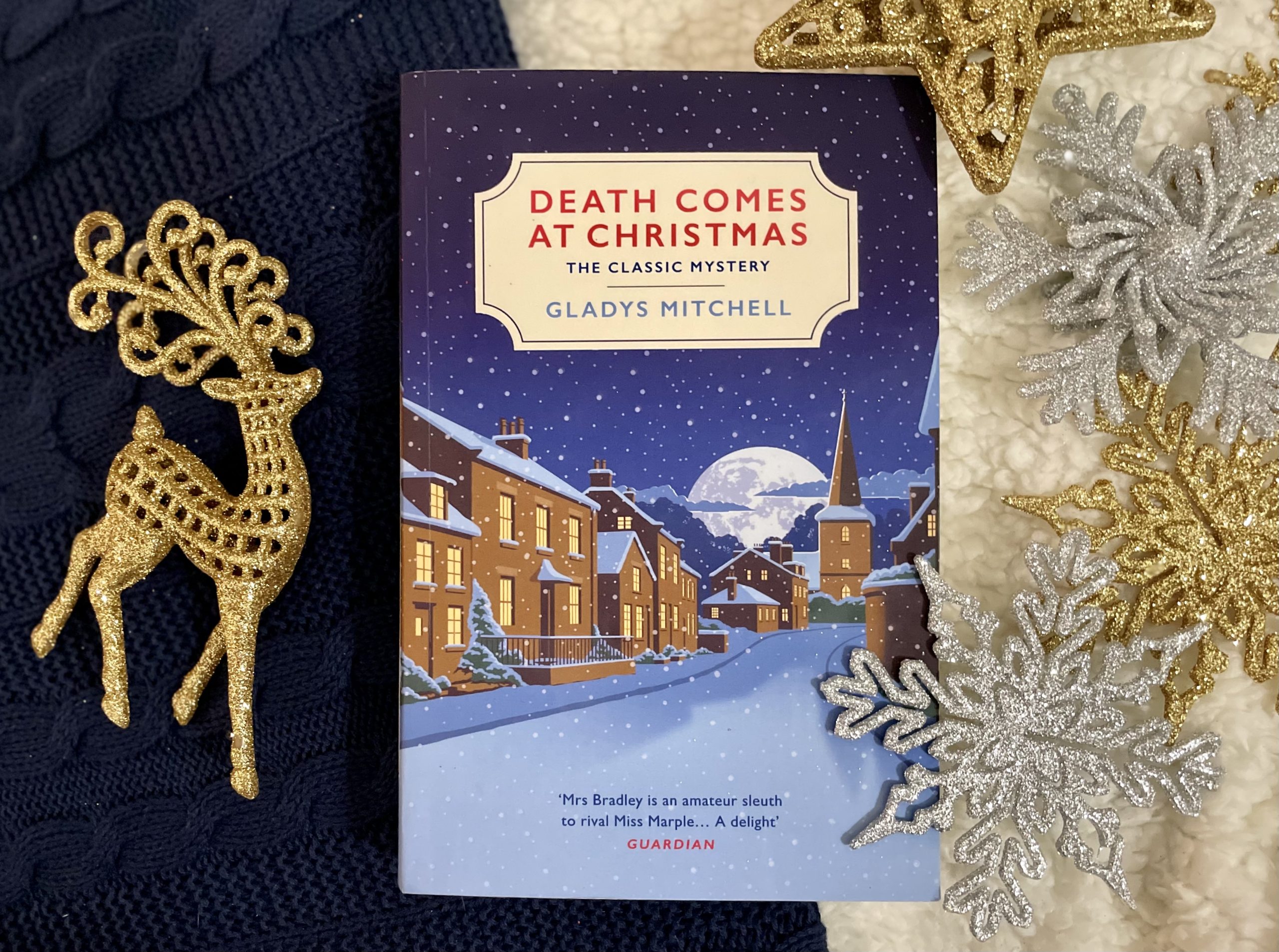One of my goals for this series is to read new Golden-Age mystery authors, and Death Comes at Christmas is my first attempt to do so. Gladys Mitchell wrote 66 books about Mrs. Bradley, who’s also a doctor and an established psychoanalyst. (You’ll notice the same “human expertise” vibes as Poirot and Miss Marple, but with an explicit professional bent.) I was particularly excited to read about a female detective with a formal profession – so often, female amateurs are simply women of leisure.
In Death Comes at Christmas, originally published as Dead Men’s Morris, Mrs. Bradley goes to visit her pig-farming nephew in Oxfordshire. When a local lawyer turns up dead on Christmas Day, and another dead body soon follows, it’s up to Mrs. Bradley to solve the case.
A muddled mélange of folk traditions
Similar to Sayers in The Nine Tailors, Mitchell takes the opportunity to explore the traditions of the Oxford countryside. In Death Comes at Christmas, we get detailed explorations of pig-farming practices, Morris dancing, heraldry, and ghosts. Mitchell grew up in Oxford, and I assume her characters are reasonable representations of the characters she knew and loved there.
The mystery itself gets a little lost in the mix. At certain points, Mrs. Bradley and her nephew spend pages of dialogue debating the finer points of pig and farer psychology. These debates may have been crystal clear to a contemporary English reader, with similar cultural assumptions to Mitchell. Unfortunately, as a modern American with no background in pig-farming, I found them tricky to wrap my head around. Mitchell also includes similar levels of intricacy about Morris dancing traditions and the symbology of coats of arms. Unlike Sayers’ clear explanations of campanology in The Nine Tailors, these allusions quickly became overwhelming to parse.
Once you cut through all of the folklore, the mystery in Death Comes to Christmas relies quite a bit on psychology. I was quite excited for this element, especially given that Mrs. Bradley is a professional psychoanalyst. Unfortunately, this psychoanalysis relies on first-person accounts from the characters, many of whom have strong accents. As a result, I spent most of my reading effort interpreting the language, rather than engaging with it. And after all of that effort, the mystery is – fine.
The pragmatics of Christmas detection – and Easter, and May Day
I mentioned earlier that this novel was first published as Dead Men’s Morris, which will now become relevant. Because while the plot starts at Christmas, and the first murder takes place on Christmas, the entire story spans six months. As you can imagine, I was quite put out to discover that my Christmas cozy actually ended in late May – but the title change, presumably to up Christmas sales, explains that discrepancy.
That said, the Christmas vibes are great while they last. We get to see a farmhouse Christmas celebration, complete with lazing around and mystery-solving. Mitchell is not inclined to be sentimental about things like decorations or traditions, and instead devotes attention to the pragmatics of gathering family and friends together. Which is certainly an accurate choice, though not, in my mind, the most enjoyable part of the holiday.
Time marches on
Look, I wanted to love this book. A female Golden Age author, a professional psychoanalyst detective, a cozy farmhouse Christmas – what’s not to love? But all I could think as I worked my way through this was , “I’m not the intended audience.” Mitchell clearly wrote for a specific crowd, with a specific cultural and historical context. But as a modern American reader, I found it extremely difficult to engage with the content. I’m willing to give The Mrs. Bradley series another shot – but maybe I’ll look for one that’s a little less culturally specific next time.
Read this if…
- You’re really into English folklore
- You like the idea of a “witchy” female sleuth
- You already love Mrs. Bradley
Skip this if…
- You get tired of reading accents
- You are even mildly uninterested in pig farms
- You’re looking for something very Christmassy
Random reading thoughts:
- Mrs. Bradley says “love” and “child” a TON. Like, multiple times a page. Can someone explain this to me – is this just how people used to talk?
- Also, if anyone has a fun primer on Morris dancing, please point me to it!
I’m really excited about tomorrow’s entry – it’s a bit of a twist with some short stories! See you tomorrow – till then, stay cozy, and stay curious!

2 responses to “Advent of Mystery, Day 2: Death Comes at Christmas by Gladys Mitchell”
[…] 2: Death Comes At Christmas by Gladys […]
[…] 2: Death Comes At Christmas by Gladys […]